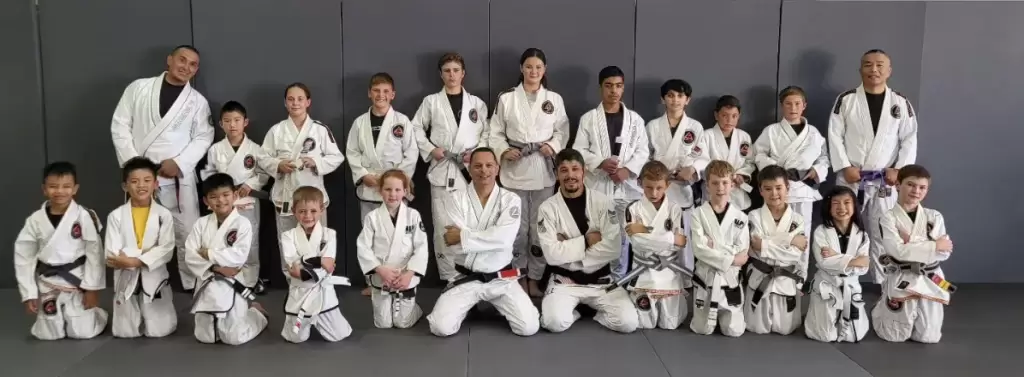What is BJJ?
The story of Brazilian Jiu Jitsu is a unique story of a martial art that would change the world. While only being around 100 years old, BJJ has a rich history full of interesting characters, extending back to Brazil during the 1920s and before that to Japan. BJJ was adapted from various Japanese judo practitioners who travelled throughout Brazil who participated in public battles and demonstrations.
Brazilian Jiu-Jitsu (BJJ) is a fighting martial art in which two practitioners attempt to defeat the other opponent using joint locks and chokes. Points are also awarded for various advantages/dominant positions during the match. Practitioners usually practice in the Gi which is similar to the Judo kimono or without Gi, usually shorts and a rashguard/T-shirt.
What a typical class is like?
Start & Warm Ups (10-15 minutes): Warm up involves stretching, short jog around the mat area, and BJJ specific exercises such as forward/backward rolls and more.
Practice Techniques & Drills (20-30 minutes): The instructor will teach some techniques, usually as part of program that is set out by the academy. Students will learn the technique and practice with their partner. The instructor will then encourage the students to drill the techniques learnt to practice in a manner whereby there is a little resistance with the training partner.
Free Roll or Sparring (20-30 minutes): Practitioners start sparring (Free Roll) with their partners usually 5 minutes each session and then move on to the next partners in the gym.
End & Cool Down (5 minutes): Ending the class generally involves some stretching exercises to help prevent injury.
Etiquette for Training:
- There is a saying in Jiu Jitsu “You either win or you learn” tapping out or losing is a part of Jiu Jitsu, therefore when you lose or tap out during a sparring session, you must let go of your ego and accept that tapping out is part of the learning session from Jiu Jitsu.
- Mat areas are free of shoes for both hygiene and etiquette reasons.
- Attacking the fingers with small joint manipulation, striking, and certain types of leg locks are prohibited in Jiu Jitsu therefore, gym/dojo will not allow them.
Belts and Ranks:
There are eight belts for adults in BJJ with promotions with stripes in between each belt rank, the belt progressions are based on the formal grading system or at the instructor’s discretion in view of the student’s progress:
- White
- Blue
- Purple
- Brown
- Black
- Other belts such Red & black, Read & white, and Red are reserved for highly experienced practitioners or grand masters
Basic Positions:
The basic positions in Jiu Jitsu are as follows, with some positions awarded for points during competition:
- Full Guard
- Half Guard
- Side control
- Knee on belly
- Mount
- Rear mount/back control
- Turtle
Hygiene:
Good hygiene practice must be followed in the gym/dojo. BJJ is a contact sport therefore good hygiene is important to avoid infections and odour. Students and instructors must shower as soon as possible after finishing their sessions including regular washing of the Gi and uniform at home. Training uniforms must be always kept clean and deodorants should be used before classes. Mat areas are kept shoes free to keep it away from foreign contamination and maintain a hygienic clean surface.
Thing to be aware of before starting BJJ:
- Learn the basic positions as early as possible, talk to the instructor about this
- Train consistently, training should be continued regularly and consistently as best as you can the same days and nights per week.
- Prepare yourself for the ups and downs, it is normal to feel unmotivated to train sometimes but you must continue to practice on your techniques to help your game and develop your unique style. This in turn makes it more challenging and adds some different experiences to your training.
- You do not need to excel at everything, keep things simple just explore the techniques you’re familiar with and focus on the one or two things you enjoy using the most.
- Sparring and free rolling is difficult when you are new to BJJ. Do not be discouraged when you are exhausted by a sparring session, it is normal even if you are physically fit. This exhaustion is caused by usage of inefficient energy rather than solely being unfit. Therefore, by training consistently you will learn how to adapt yourself to different situations and use your energy better over time.


